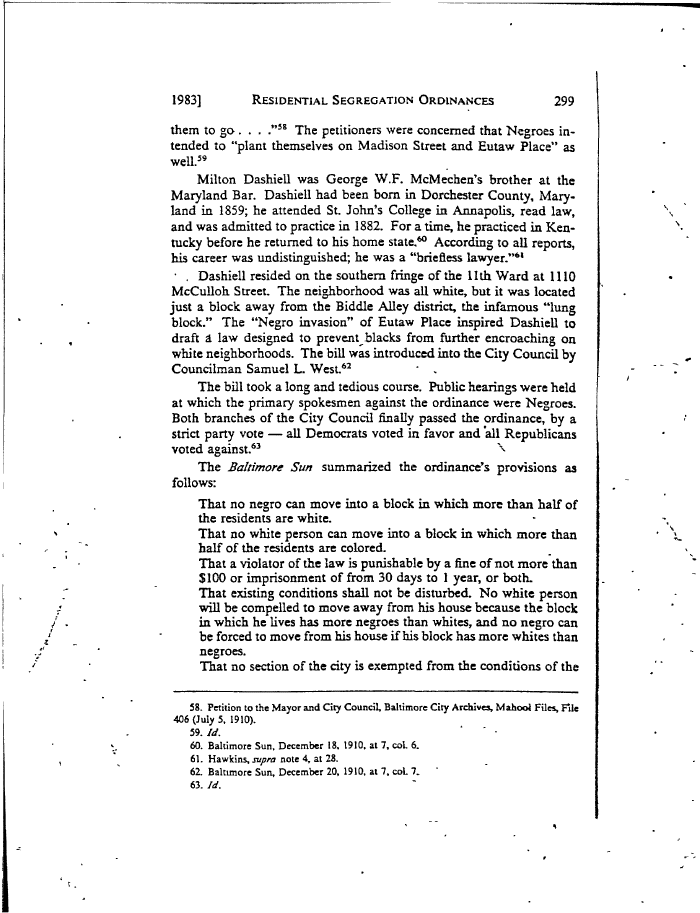 |
||||
|
Garrett Power, Apartheid Baltimore Style: The Residential Segregation Ordinances of 1910-1913, Maryland Law Review, 42 (1983) , Image No: 12 Enlarge and print image (53K) << PREVIOUS NEXT >> |
 |
||||
|
Garrett Power, Apartheid Baltimore Style: The Residential Segregation Ordinances of 1910-1913, Maryland Law Review, 42 (1983) , Image No: 12 Enlarge and print image (53K) << PREVIOUS NEXT >> |
| 1983] RESIDENTIAL SEGREGATION ORDINANCES 299 them to go . . . .58 The petitioners were concerned that Negroes in- tended to "plant themselves on Madison Street and Eutaw Place" as well.59 Milton Dashiell was George W.F. McMechen's brother at the Maryland Bar. Dashiell had been born in Dorchester County, Mary- land in 1859; he attended St. John's College in Annapolis, read law, and was admitted to practice in 1882. For a time, he practiced in Ken- tucky before he returned to his home state,60 According to all reports, his career was undistinguished; he was a "briefless lawyer."61 Dashiell resided on the southern fringe of the llth Ward at 1110 McCulloh Street. The neighborhood was all white, but it was located just a block away from the Biddle Alley district, the infamous "lung block." The "Negro invasion" of Eutaw Place inspired Dashiell to draft a law designed to prevent blacks from further encroaching on white neighborhoods. The bill was introduced into the City Council by Councilman Samuel L. West.62 The bill took a long and tedious course. Public hearings were held at which the primary spokesmen against the ordinance were Negroes. Both branches of the City Council finally passed the ordinance, by a strict party vote — all Democrats voted in favor and all Republicans voted against.63 The Baltimore Sun summarized the ordinance's provisions as follows: That no negro can move into a block in which more than half of the residents are white. That no white person can move into a block in which more than half of the residents are colored. That a violator of the law is punishable by a fine of not more than $100 or imprisonment of from 30 days to 1 year, or both. That existing conditions shall not be disturbed. No white person will be compelled to move away from his house because the block in which he lives has more negroes than whites, and no negro can be forced to move from his house if his block has more whites than negroes. That no section of the city is exempted from the conditions of the 58. Petition to the Mayor and City Council, Baltimore City Archives, Mahool Files, File 406 (July 5, 1910). 59. Id. 60. Baltimore Sun, December 18, 1910. at 7, col. 6. 61. Hawkins, supra note 4, at 28. 62. Baltimore Sun, December 20, 1910, at 7, coL 7. 63. Id. |